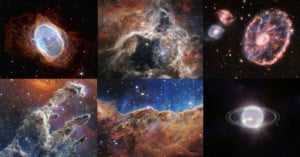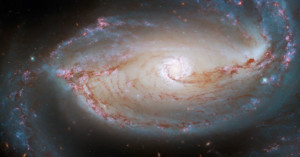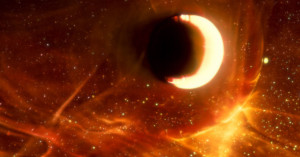
Astronomy Photographer of the Year Features Cosmic Fireworks and Aurora Dragons
The shortlist for the Astronomy Photographer of the Year has been revealed with a hatful of spectacular celestial images picked from over 3,500 entries.

The shortlist for the Astronomy Photographer of the Year has been revealed with a hatful of spectacular celestial images picked from over 3,500 entries.

An amateur Italian astronomer discovered five dwarf galaxies, and they are now named after him.

The James Webb Space Telescope captured images of 19 nearby spiral galaxies as part of its long-term Physics at High Angular resolution in Nearby GalaxieS (PHANGS) program.

Hubble continues to generate some some outstanding visuals of space and its latest is no exception. However, as much as this photo looks like it portrays a densely packed region of galaxies, reality is not quite so straightforward.

Most "serious" astrophotographers will balk at the idea of a smart telescope. While it may miss some of the professional level tools, resolution, and precision, the $2,499 eQuinox 2 from Unistellar does provide easy access to the cosmos for up to 10 viewers at a time, making it a great (albeit expensive) tool for beginners and casual stargazers to enjoy viewing interstellar objects in minutes.

The James Webb Space Telescope (JWST) has been used to identify six galaxies that potentially emerged extremely early in the universe’s history and are so massive they should not be possible under the current cosmological theory.

The James Webb Space Telescope (JWST) blasted off into space on December 25, 2021. Since then readers have been treated to a series of stunning images of the cosmos.

The European Space Agency (ESA) has published a video that puts into perspective just how far away the latest target of the James Webb Space Telescope (JWST), the Cartwheel Galaxy, is.

The James Webb Space Telescope has delivered a follow-up to its first images that were revealed last month. The photo is of the Cartwheel Galaxy and is a composite image created from its Near-Infrared Camera (NIRCam) and Mid-Infrared Instrument (MIRI).

Canon has partnered with an Australian university to bundle 10 Canon EF 400mm f/2.8 L IS II lenses together into what they call the Huntsman Telescope to scout the skies from the Southern Hemisphere.

Last week, NASA shared a photo captured by the James Webb Space Telescope's guidance camera that, while imperfect, is the deepest image ever captured of the universe so far.

Astrophotographer Brandon O'Meal managed to photograph a pair of colliding galaxies that exist about 130 million light-years away from his backyard.

NASA's Hubble Space Telescope has calibrated more than 40 "milepost markers" of space and time over the course of the last 30 years that scientists are using to measure the expansion of the universe.

The universe is losing a galaxy. Recent images from the NASA/ESA Hubble Space Telescope show two galaxies in the process of merging. Dubbed "Angel Wing" due to its symmetrical appearance, the collision forms part of the Leo constellation.

NASA is celebrating the Hubble Space Telescope's 32nd birthday through a remarkable photo that shows a collection of five closely-knit galaxies called The Hickson Compact Group 40.

The Hubble Space Telescope has been responsible for some of the most exciting astronomical finds in history and while research time with Hubble is highly sought after, anyone can check what the storied telescope is currently pointed at whenever they like.

The Hubble Space Telescope has set a new record: photographing a star that existed when the universe was just 7% of its current age. The star is the farthest away any has ever been photographed, and its light took 12.9 billion years to reach Hubble.

The Hubble Space Telescope has captured an incredibly detailed photo of a spiral galaxy that is shaped like an eye. The photo was made thanks to two of Hubble's instruments: the Wide Field Camera 3 (WFC3) and the Advanced Camera for Surveys (ACS).

The Hubble Space Telescope recently celebrated its 20th year using the Advanced Camera for Surveys (ACS), which was installed on Hubble in March of 2002 and became its most used camera.

Hubble has captured a stunning photo of two interacting galaxies that likely passed through one another, which caused them to ignite in a "frenzy of starbirth."

Finnish photographer Juha Tanhua has been shooting an unusual series of "space photos." While the work may look like astrophotography images of stars, galaxies, and nebulae, they were actually captured with a camera pointed down, not up. Tanhua created the images by capturing gasoline puddles found on the asphalt of parking lots.

The Hubble Space Telescope, while soon to be succeeded by the James Webb Space Telescope, continues to capture important images of the universe. In two recent images, perspective plays an important role in how these galaxies appear.

The Hubble Space Telescope has observed a black hole at the center of a dwarf galaxy that is not acting like the destructive monsters they are often portrayed as. Instead, this black hole is creating stars rather than absorbing them.

In December of last year, Hubble captured a photo of a distant galaxy that, thanks to gravitational lensing, appeared almost as a perfect "Einstein Ring." A year later, astronomers revealed what they learned from examining the photo.

The Hubble Space Telescope in concert with the Atacama Large millimeter/submillimeter Array (ALMA) in Chile found what NASA describes as odd: early, massive, "dead" galaxies that have run out of the fuel necessary to continue to make stars.

NASA has published a spectacular image that was photographed by the Hubble Space Telescope that shows what the space organization describes as a three-way tug-of-war between interacting galaxies.

NASA has released two new stunning images taken by Hubble after the legendary telescope was forced offline for a month.

As part of its celebration of a new year, the NASA/ESA Hubble Space Telescope has published six different galaxy mergers. These rare astronomical phenomena were captured as part of a recent survey to investigate the rate of new star formations.

In celebration of its 30th anniversary capturing stunning images of stellar objects, NASA has released 30 newly-processed Hubble images featuring galaxies, star clusters, and nebulae.

Paris-based artist Roman Hill explores the microscopic world as a way to capture the immensity of the universe. His latest short film, titled As Above, looks like a mesmerizing display of cosmic gasses, stars, and galaxies, but it was shot on a tabletop.